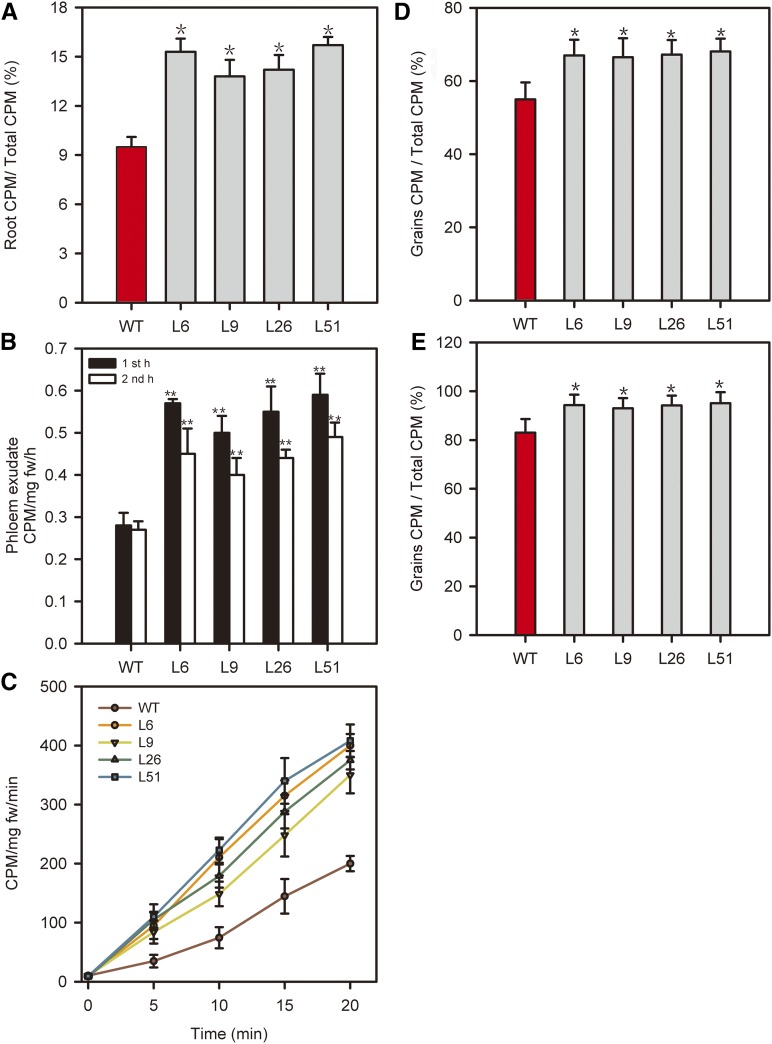Figure 1.
Suc loading and long-distance transport in wild-type (WT) and pPP2::AtSUC2 rice plants. A, Seedlings of the wild type and four independent lines of pPP2::AtSUC2 (L6, L9, L26, and L51) were photosynthetically labeled with [14C]CO2, and shoots and roots were analyzed separately by scintillation. The 14C transported to the roots is expressed as a percentage of total 14C incorporated. The data are means ± sd from four independent experiments. B, Phloem exudation from the flag leaves of wild-type and transgenic plants into EDTA-containing solution after photosynthetic labeling with [14C]CO2, expressed as counts per minute (CPM) per milligram of leaf fresh weight per hour (fm/h). The data are means ± sd from four independent experiments. C, Time course of uptake of [14C]Suc into flag leaves of wild-type and transgenic plants 10 d after fertilization, expressed as counts per minute per milligram of leaf fresh weight per minute. D, Partitioning of fed 14C in flag leaves of wild-type and pPP2::AtSUC2 rice plants. Labeling was performed on the flag leaves on the day of fertilization. The data are expressed as means ± sd of six plants. E, Partitioning of fed 14C in flag leaves of wild-type and pPP2::AtSUC2 rice plants. Labeling was performed on the flag leaves on the 10th day after fertilization. The data are expressed as means ± sd of six plants. For A, B, D, and E, significant differences from the wild type are based on Student’s t test (*, P < 0.05; and **, P < 0.01). For C, the differences between the wild-type and transgenic lines were significant at P < 0.01 at time points of 5, 10, 15, and 20 min based on Student’s t test.

